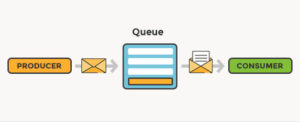Contents
Introduction to Packer
What is Packer?
Packer is an open-source tool for creating identical machine images for multiple platforms from a single source configuration. Packer is lightweight, runs on every major operating system, and is highly performant, creating machine images for multiple platforms in parallel. Packer does not replace configuration management like Chef or Puppet. In fact, when building images, Packer is able to use tools like Chef or Puppet to install software onto the image.
A machine image is a single static unit that contains a pre-configured operating system and installed software that is used to quickly create new running machines. Machine image formats change for each platform. Some examples include AMIs for EC2, VMDK/VMX files for VMware, OVF exports for VirtualBox, etc.
Why Use Packer?
Pre-baked machine images have a lot of advantages, but most have been unable to benefit from them because images have been too tedious to create and manage. There were either no existing tools to automate the creation of machine images or they had too high of a learning curve. The result is that, prior to Packer, creating machine images threatened the agility of operations teams, and therefore aren’t used, despite the massive benefits.
Packer changes all of this. Packer automates the creation of any type of machine image. It embraces modern configuration management by encouraging you to use a framework such as Chef or Puppet to install and configure the software within your Packer-made images.
In other words: Packer brings pre-baked images into the modern age, unlocking untapped potential, and opening new opportunities.
Advantages of Using Packer
Superfast infrastructure deployment. Packer images allow you to launch completely provisioned and configured machines in seconds, rather than several minutes or hours. This benefits not only production but for development as well since development virtual machines can also be launched in seconds, without waiting for a typically much longer provisioning time.
Multi-provider portability. Because Packer creates identical images for multiple platforms, you can run production in AWS, staging/QA in a private cloud like OpenStack, and development in desktop virtualization solutions such as VMware or VirtualBox. Each environment is running an identical machine image, giving ultimate portability.
Improved stability. Packer installs and configures all the software for a machine at the time the image is built. If there are bugs in these scripts, they’ll be caught early, rather than several minutes after a machine is launched.
Greater testability. After a machine image is built, that machine image can be quickly launched and smoke tested to verify that things appear to be working. If they are, you can be confident that any other machine launched from that image will function properly.
Packer makes it extremely easy to take advantage of all these benefits.
Use Cases
Continuous Delivery
Packer is lightweight, portable, and command-line driven. This makes it the perfect tool to put in the middle of your continuous delivery pipeline. Packer can be used to generate new machine images for multiple platforms on every change to Chef/Puppet.
As part of this pipeline, the newly created images can then be launched and tested, verifying the infrastructure changes work. If the tests pass, you can be confident that the image will work when deployed. This brings a new level of stability and testability to infrastructure changes.
Dev/Prod Parity
Packer helps keep development, staging, and production as similar as possible. Packer can be used to generate images for multiple platforms at the same time. So if you use AWS for production and VMware (perhaps with Vagrant) for development, you can generate both an AMI and a VMware machine using Packer at the same time from the same template.
Mix this in with the continuous delivery use case above, and you have a pretty slick system for consistent work environments from development all the way through to production.
Appliance/Demo Creation
Since Packer creates consistent images for multiple platforms in parallel, it is perfect for creating appliances and disposable product demos. As your software changes, you can automatically create appliances with the software pre-installed. Potential users can then get started with your software by deploying it to the environment of their choice.
